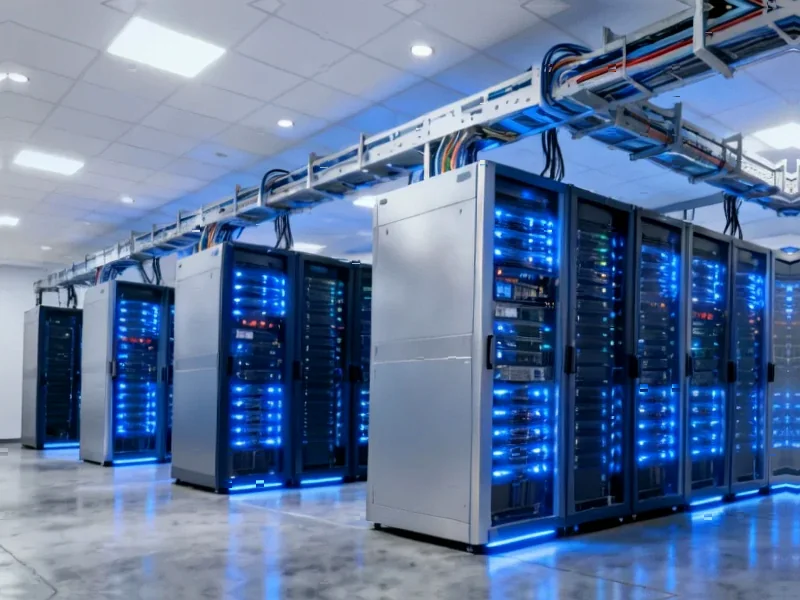According to Neowin, Microsoft is committing over $7.9 billion to AI and cloud infrastructure in the UAE between 2026 and 2029, with $5.5 billion allocated to capital expenses and nearly $2.4 billion for local operating costs. This follows Microsoft’s earlier $1.5 billion equity investment in G42, the UAE’s sovereign AI company, and brings Microsoft’s total UAE investment to more than $13.2 billion when including previous infrastructure spending. Critically, Microsoft has secured US government export licenses to ship the equivalent of 21,500 Nvidia A100 GPUs already, plus licenses for an additional 60,400 A100-equivalent chips using advanced Nvidia GB300 GPUs. These resources will power AI models from OpenAI, Anthropic, open-source providers, and Microsoft for regional governments, enterprises, and developers. This massive commitment signals a fundamental shift in global AI strategy.
The New AI Geography
Microsoft’s UAE investment represents a strategic pivot in the global AI infrastructure race. While most attention focuses on US-China competition, this move creates a third power center in the Middle East that could reshape technology geopolitics. The UAE’s positioning as a neutral hub between East and West, combined with Microsoft’s US government-approved technology exports, creates a unique bridge for AI development that avoids direct US-China tensions. This isn’t just about serving Middle Eastern markets—it’s about establishing a global AI hub that can serve markets across Africa, Central Asia, and potentially even parts of Asia where US technology faces restrictions.
The Sovereign AI Imperative
G42’s role as the UAE’s “sovereign AI company” reveals a crucial trend that will accelerate globally: nations are no longer content to rely entirely on foreign cloud providers for critical AI capabilities. The partnership model Microsoft has established—where a global tech giant provides infrastructure and technology while a local sovereign entity maintains control and oversight—will become the template for similar arrangements worldwide. We’re likely to see sovereign AI partnerships emerge in Southeast Asia, Latin America, and potentially even European nations concerned about US technology dominance. This represents a fundamental shift from the cloud computing era, where geographic presence mattered less than global scale.
Compute as Diplomatic Currency
The US government’s approval of advanced GPU exports to the UAE through Microsoft represents a new form of technology diplomacy. Rather than restricting access to maintain competitive advantage, the Biden administration appears to be using compute access as strategic leverage. This creates a fascinating dynamic where AI infrastructure becomes diplomatic currency, with the US potentially using GPU export licenses to build alliances and counter Chinese influence in key regions. The scale of approved exports—equivalent to over 80,000 high-end GPUs—suggests the UAE facility will have compute capacity rivaling major US and European AI data centers, making it a genuine global player rather than just a regional outpost.
Regional Market Transformation
This investment will accelerate AI adoption across emerging markets that have traditionally lagged in technology infrastructure. The Middle East, Africa, and Central Asia represent the next major frontier for AI deployment, with unique use cases in energy optimization, financial services modernization, and government digitization. Microsoft’s commitment to making advanced models from OpenAI, Anthropic, and others available through this infrastructure means regional organizations won’t need to build capabilities from scratch. This could create a leapfrog effect similar to what happened with mobile technology, where regions skipped legacy infrastructure phases entirely.
The Coming Infrastructure Arms Race
Microsoft’s move will force responses from other cloud providers. Amazon Web Services and Google Cloud cannot afford to cede this strategic territory, meaning we’re likely to see competing billion-dollar investments in Middle Eastern AI infrastructure within the next 12-18 months. The competition will extend beyond mere data center construction to include specialized AI services, local partnerships, and regulatory accommodations. This infrastructure arms race will benefit customers through increased choice and accelerated innovation, but it also risks creating fragmented AI ecosystems with different regional standards and capabilities.
Beyond 2029: The Permanent Shift
Looking beyond the 2029 timeline, this investment represents a permanent reconfiguration of global AI infrastructure. The era of US-centric AI development is ending, replaced by a multipolar model where strategic hubs in the Middle East, Southeast Asia, and potentially Latin America become equal partners in AI advancement. This decentralization will drive innovation through diverse perspectives and use cases, but it also creates new challenges for governance, security, and interoperability. Microsoft’s UAE bet isn’t just about the next four years—it’s about positioning for the AI landscape of the 2030s, where geographic diversity in AI capability may become as important as technological superiority.




